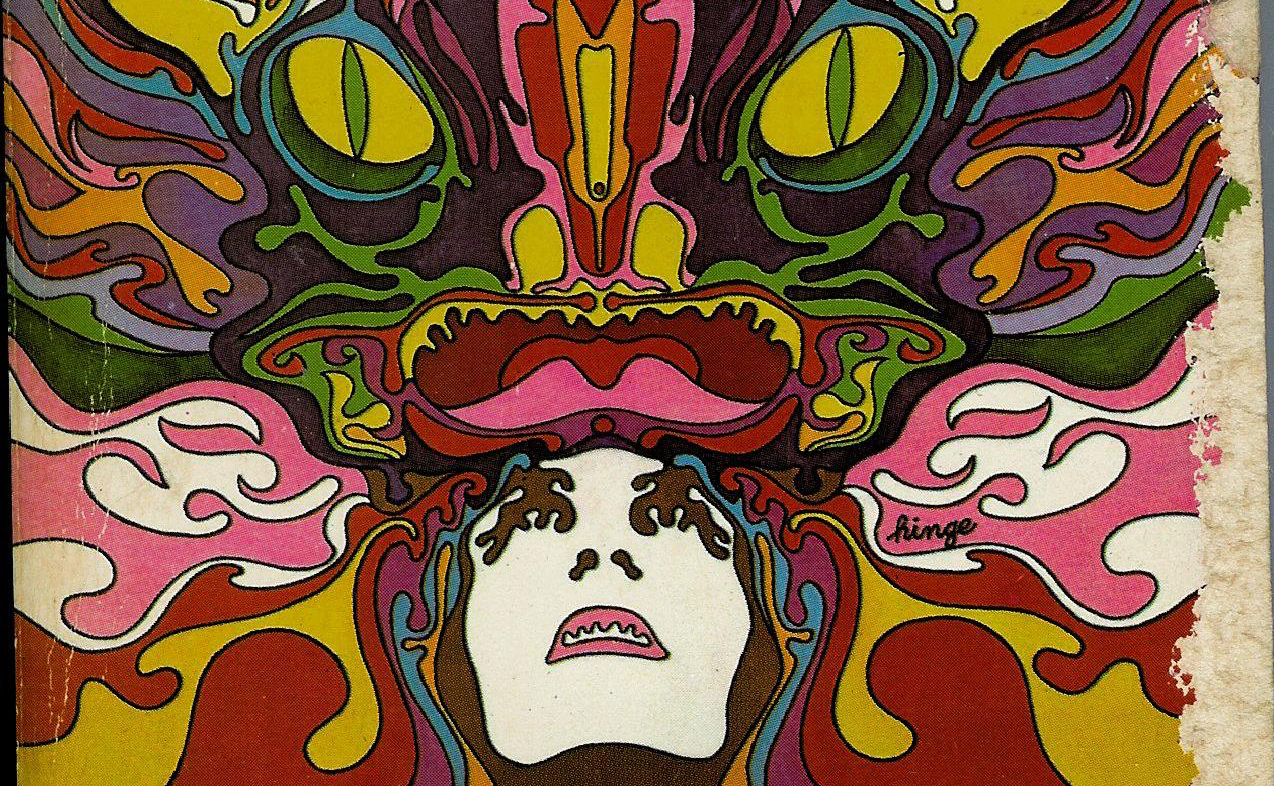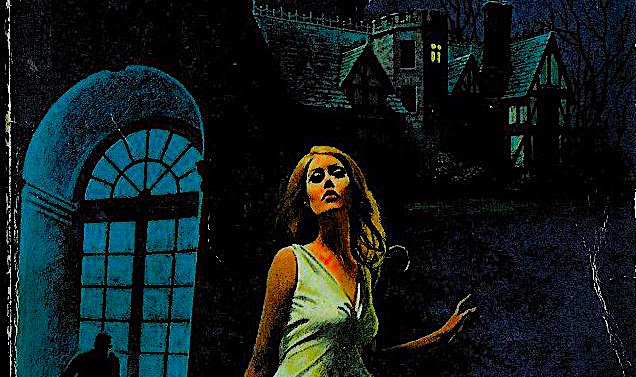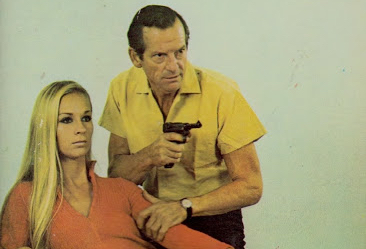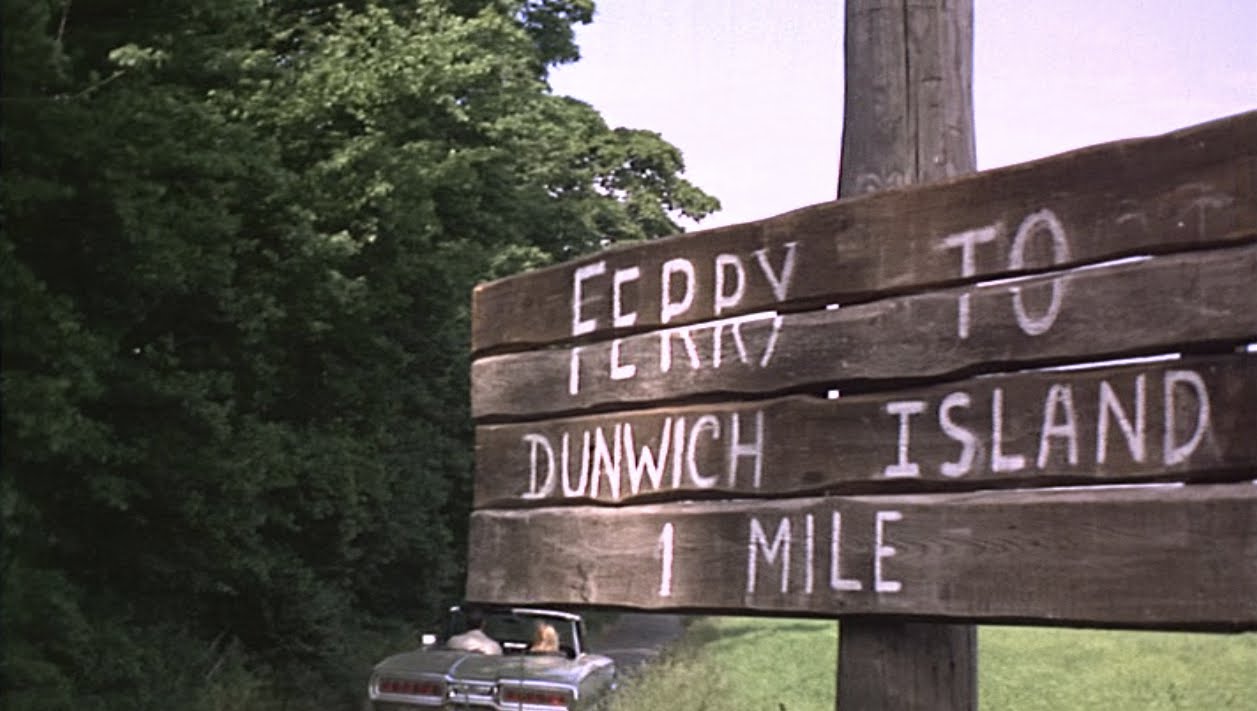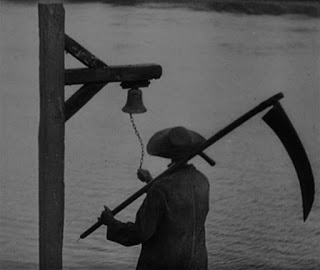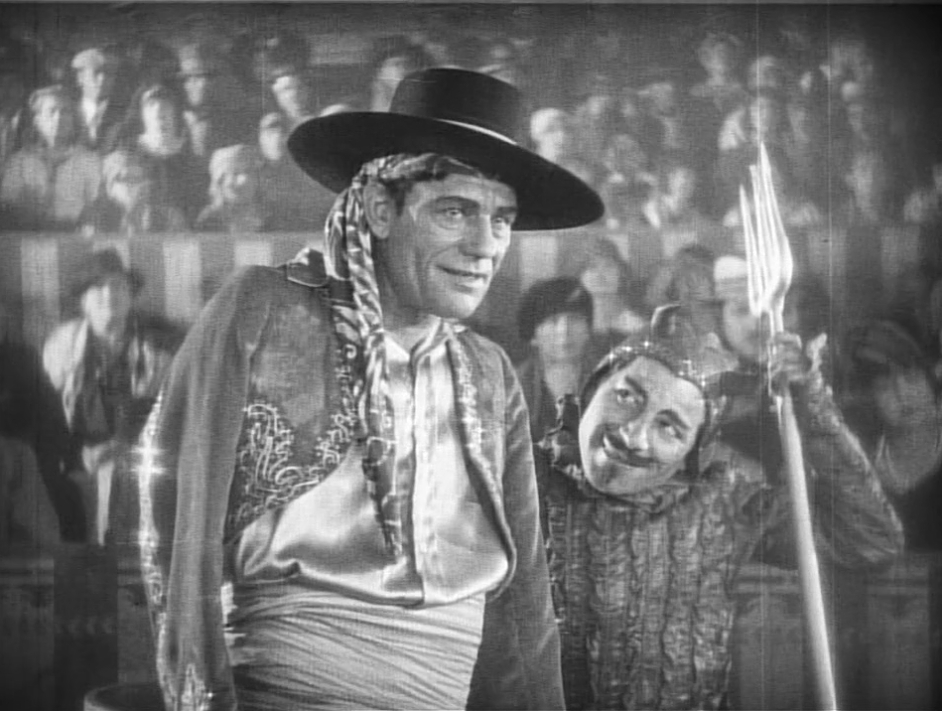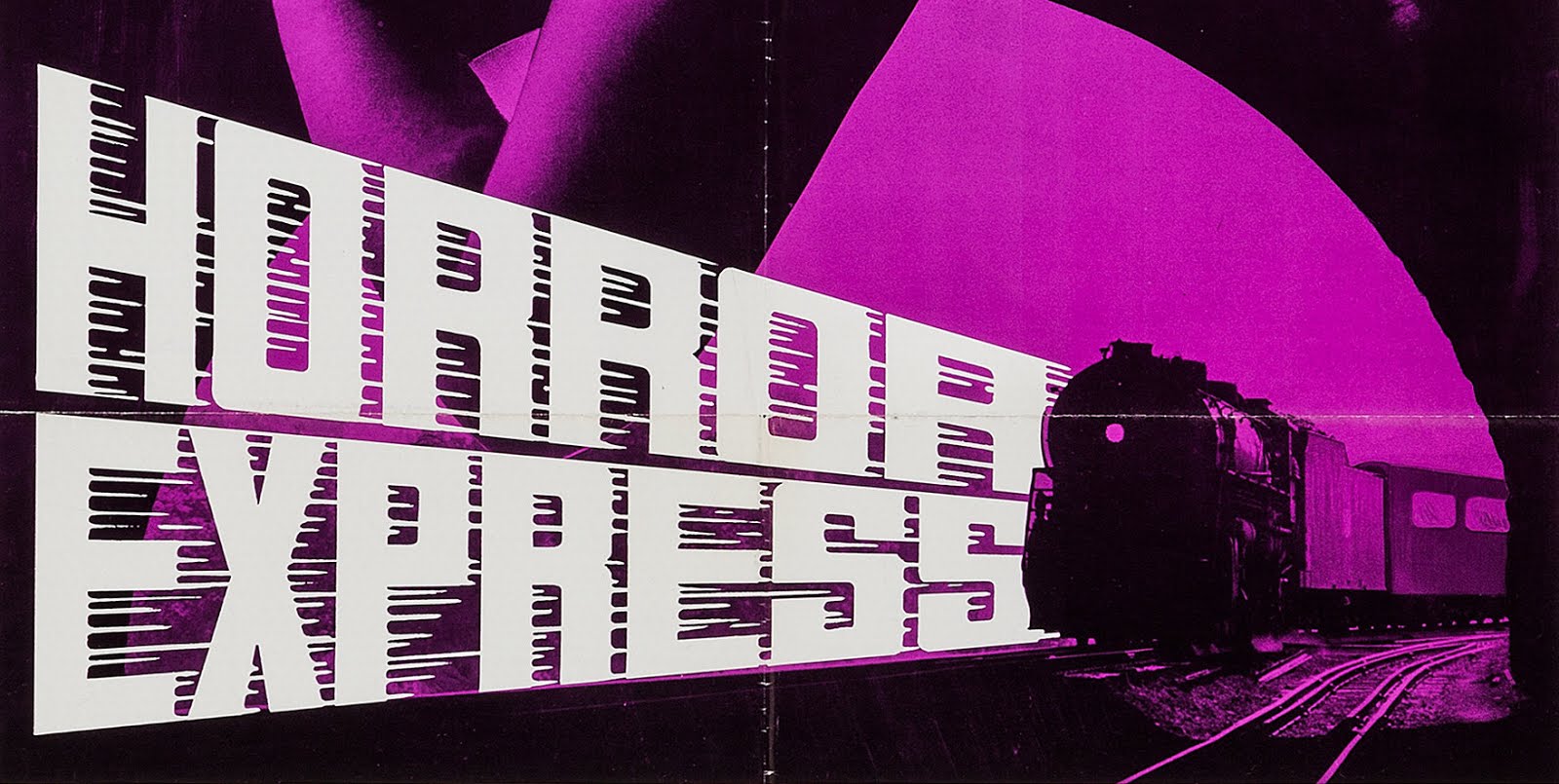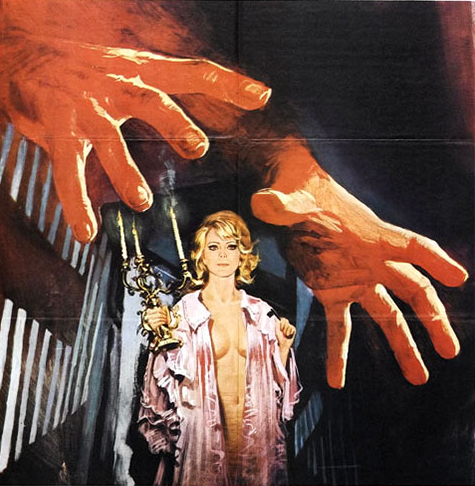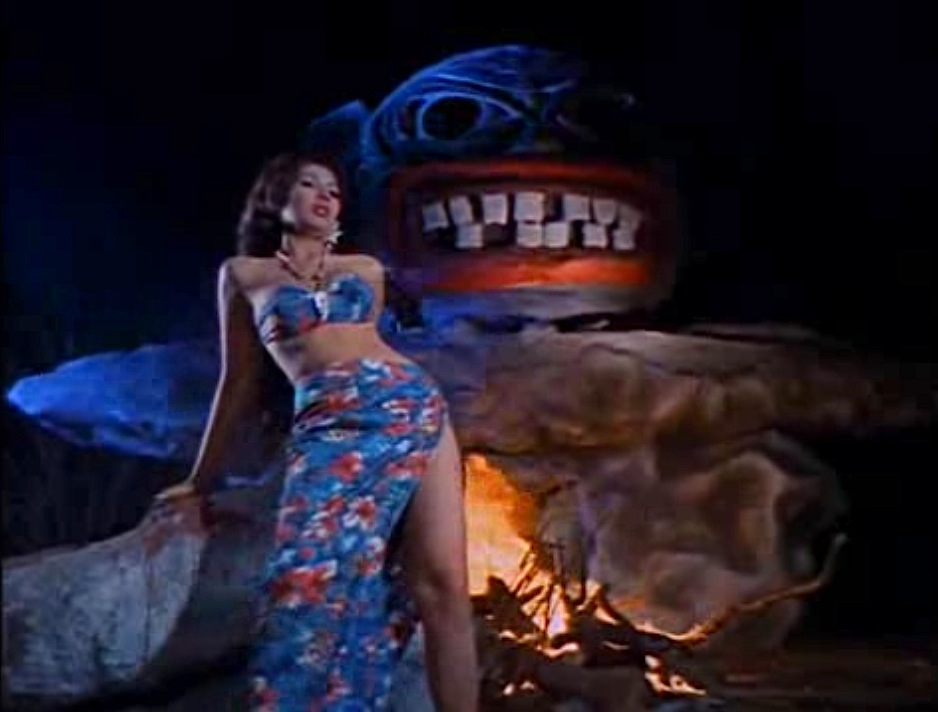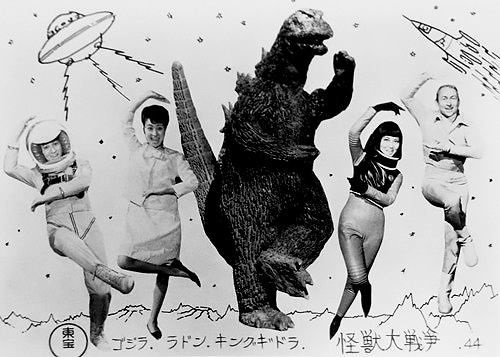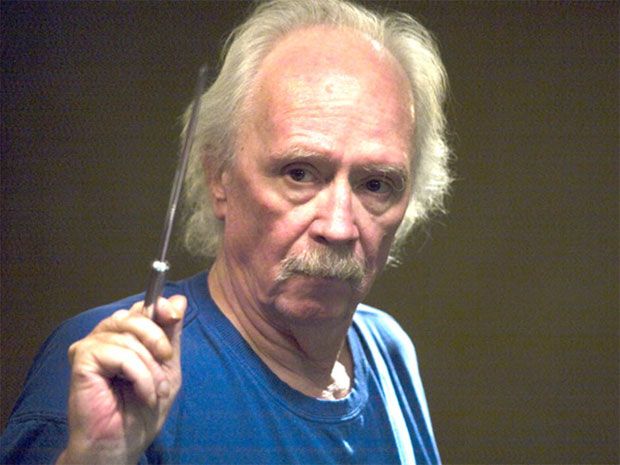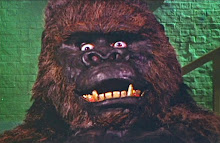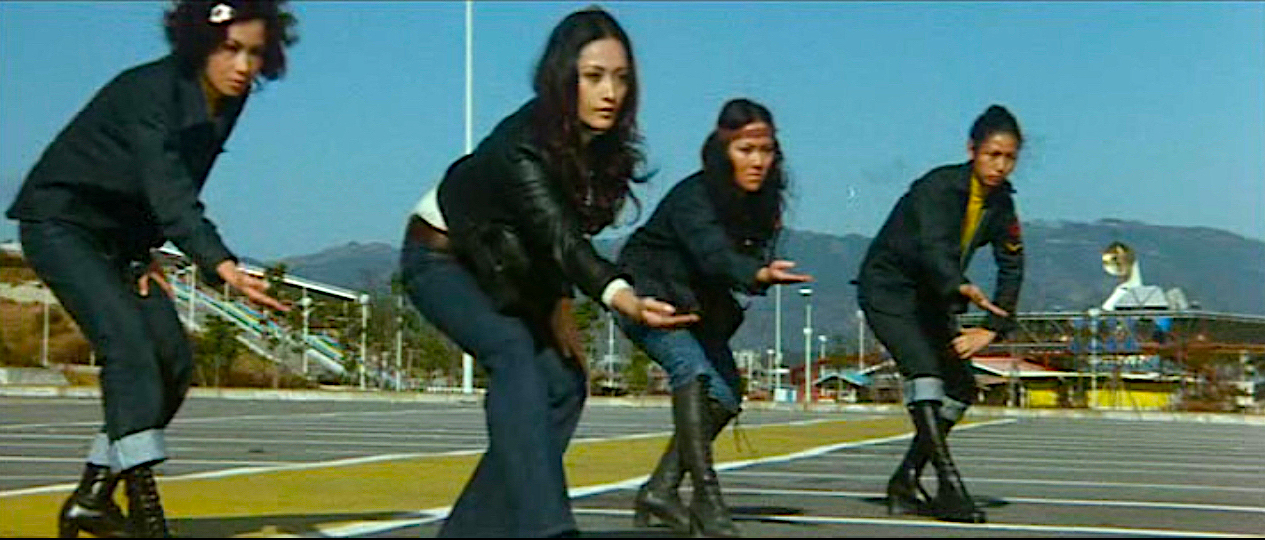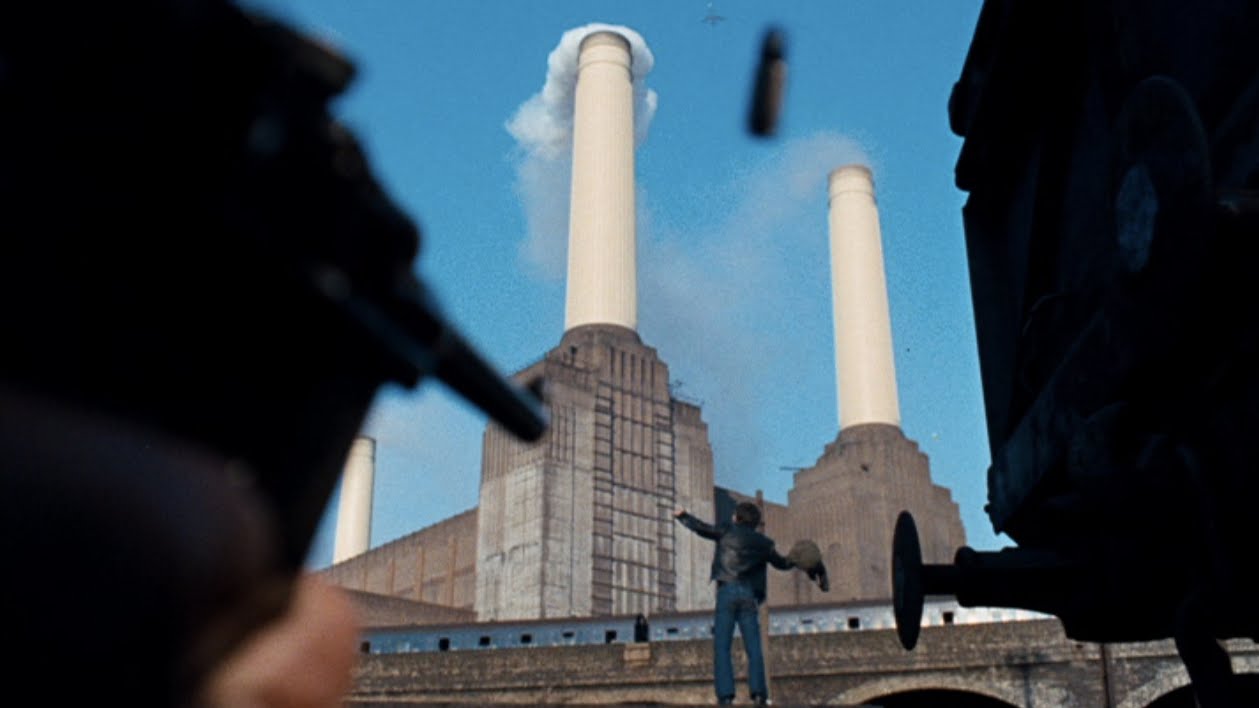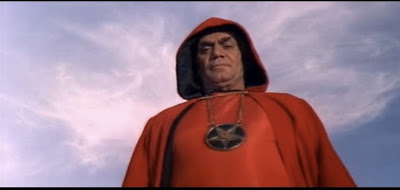 If we were to chart Roger Corman’s engagement with socio-political issues in his work upon some kind of hypothetical scale, then at the opposite end of it from the uncomfortably effective The Intruder, we would find ‘Gas-s-s-s!, or, It Became Necessary to Destroy the World in Order to Save It’ [henceforth ‘Gas’, just for the sake of our sanity], an inexplicable, rather hare-brained movie which, over fifty years later, is difficult not to see as one of its directors greatest failures. (I mean, say what you will about Creature From The Haunted Sea, but at least it had reasons for being crap.) (1)
If we were to chart Roger Corman’s engagement with socio-political issues in his work upon some kind of hypothetical scale, then at the opposite end of it from the uncomfortably effective The Intruder, we would find ‘Gas-s-s-s!, or, It Became Necessary to Destroy the World in Order to Save It’ [henceforth ‘Gas’, just for the sake of our sanity], an inexplicable, rather hare-brained movie which, over fifty years later, is difficult not to see as one of its directors greatest failures. (I mean, say what you will about Creature From The Haunted Sea, but at least it had reasons for being crap.) (1) This is extremely regrettable, given that the project represents an important milestone in Corman’s career on a number of levels. Not only does it mark the conclusion of his cycle of ‘counter-culture’ films (following on from ‘The Wild Angels’ in ’66 and ‘The Trip’ in ’67), but also his final collaboration with American international Pictures (following fifteen years of fruitful co-dependence), and in fact his final work as a director of independent commercial cinema in the United States. (2)
So, what’s ‘Gas’ all about then? Well… it’s difficult to say really, and that very uncertainty soon becomes a pretty big part of the problem.
A pastel crayon animated prologue introduces us to some high ranking military officials (including such personages as ‘General Strike’, and ‘Dr Murder’ - and if you find that magazine cartoon level of humour uproariously funny, there’s hope you might enjoy this movie yet), who, in the process of attending a ceremonial function at a chemical research base in Alaska, accidentally uncork a beaker containing a cloud of custom-made poison gas which now promises to spread across the earth, killing everyone aged over twenty-five.
Moving into live action post-credits, we meet a long-haired, wise-crackin’ campus troublemaker (Bob Corff) and his adorable, only marginally less wide-crackin’ girlfriend (Elaine Giftos), who depart Dallas in a salmon pink Cadillac and promptly get involved in a series of tiresome comical capers, eventually joining forces with a group of other sketchily-defined, more-or-less hippie-aligned young people (including amongst their number both a young Bud Cort, and one Tally Coppola, later to become Talia Shire). Together, this merry band traverse a marginally post-apocalyptic version of the American South-West, enduring a multitude of symbolic / quixotic encounters and threats as they vaguely pursue an Oz-like quest to consult an ‘oracle’, whose billboards (including a count-down in miles) they spot along the highway.
And… that’s about it, really. I mean, I wish I could tell you what the wearying procession of factions, marauders, aggressors, cultists, herd-like victims and all-purpsoe extraverted weirdos our protagonists run into along the way were actually meant to represent, but, as the film’s attempts at satirical humour alternate wildly between blunt, eye-rolling obviousness and head-scratching, lost-in-translation obscurity, it is honestly difficult to locate anything here which we squares might term a ‘point’.
Which might have been all well and good, if only Corman and his collaborators been able to wrangle some other value from these narratively unglued proceedings, but, sadly, the kind of pupil-dilating visual excess and subversive, taboo-breaking chaos which defined the era’s more successful underground/counter-cultural filmmaking is in very short supply in ‘Gas’.
Shot in a range of uninhabited / wreckage-strewn desert locations across Texas and New Mexico, the film’s footage soon becomes fairly monotonous, in spite of the natural beauty of the surroundings and some intermittently impressive photography from DP Ron Dexter. The tone of the action meanwhile remains cloyingly light-hearted, employing a gratingly twee take on hippie-era surrealism, whilst the characters remain vacant, distant and uninteresting.
Even the garish, mid-century Americana of the costumes and production design simply remain… standard issue, for the most part. Please bear in mind that I say all this as a viewer who usually maintains an extremely high tolerance for what Kim Newman has termed ‘Weird Hippie Shit’, but in a word, ‘Gas’ simply feels tired.
Just a few short years earlier, Corman could reasonably have claimed to have had his finger on the pulse of the intersection between popular culture and the underground (after all, ‘The Wild Angels’ not only launched a whole new era-defining genre, but provided direct aesthetic inspiration for generations of proto-punk rebels in the process).
The shadow-haunted autumn/winter of ’69 though found Corman and screenwriter George Armitage (future director of ‘Grosse Pointe Blank’ and the fantastic Miami Blues) beginning work on ‘Gas’ at precisely the moment in which the optimism of the 1960s evaporated, leaving something darker and more fragmented behind it, ready to curdle as the decade turned… and ensuring that the film’s happy-go-lucky, flower-child hipster-isms must have felt painfully irrelevant by the time their film finally opened in September 1970. (3)
In this context, scenes which may have passed as wild, Godardian po-mo provocations back in the mid-‘60s (such as the film’s lampoon of a western shoot-out, in which characters point their fingers at each other whilst shouting the names of famous cowboy actors) simply play out as eye-rolling tedium - self-satisfied acting class wheezes dragged out for far longer than is really necessary.
Indeed, for a Corman production, ‘Gas’ feels uncharacteristically bloated and excessive. Shot across multiple locations in several states (and dogged by inevitable weather-related delays along the way), he seems to have become fixated here on mounting vast public spectacles of one kind of another.
The finished film is stuffed full of marching bands and parades, crowds of extras fleeing through the streets of Western town sets pursued by gangs of stuntmen on brightly painted bikes and sidecars, convoys of golf carts, JCBs and tooled up dune buggies (triggering entirely accidental flashes of Mansonoid paranoia), cheerleaders, football teams and hundreds of people crammed onto a remote mountaintop for the film’s conclusion… all, ultimately, to very little effect.
Amidst all this sound and fury, it becomes difficult to avoid the conclusion that the man who once shot a film as beautifully crafted as ‘Little Shoppe of Horrors’ on a single set in two and a half days has lost his way very badly somewhere along the line.
Perhaps the sole quantifiable pleasure I took from ‘Gas’ in fact came from the music - and this is entirely due to the fact that I’m a big fan of the perennially underrated Country Joe & The Fish, and in particular of their gifted lead guitarist Barry ‘The Fish’ Melton, who was charged with composing ‘Gas’s songs and incidental cues (as heard in the rare moments when the brass marching bands, cheerleading chants and honking car horns shut up for a few minutes). (4)
It’s nice to hear the various bits and pieces Melton came up with (recordings never otherwise released, insofar as I’m aware), and we also get to enjoy some choice footage of the band in full flow at some kind of outdoor festival held at a drive-in theatre, backed up by a bitchin’ psychedelic light show, inter-cut with footage of two of the young hippie characters making out during an acid trip, and accompanied by subliminal flashes of underground movie-style abstract imagery.
Arguably the film’s strongest sequence, the overall effect here is only partially spoiled by the presence of Country Joe McDonald (who I’m fairly sure would not have made the twenty-five year old cut-off point required for this movie’s plot, incidentally) doing some kind of terminally unamusing skit about how he’s an omnipotent, god-like figure named ‘A.M. Radio’, or somesuch. (My god, this obnoxiously performative, satire-lite fucking hippie ‘humour’, I swear… it’s enough to make me want to shave my head and enlist in the nearest para-military organisation post-haste.)
Aside perhaps from hardcore C.J. Fish fans though, it’s difficult to imagine that anyone at the time of ‘Gas’s original release was actually digging what Corman was laying down here. Whilst ‘straight’ audiences must have simply been confused and alienated by all this mystifying hullaballoo, the campus radicals and garage band suburban punks the movie was presumably supposed to appeal to would surely by this point have felt patronised and turned off by its parade of quirky, central casting hippies mouthing half-baked flower power witticisms, long past their sell-by date in the hyper-accelerated climate of mid-century pop culture.
Even within the sphere of disastrous, released-too-late hippie movies, ‘Gas’ ranks low, lacking the lo-fi earnestness of the Firesign Theatre’s “electric western” ‘Zachariah’, the wild artistic vision of Dennis Hopper’s ‘The Last Movie’ or the magisterial visual gimmickry of Antonioni’s ‘Zabriskie Point’.
But the saddest thing of all is that, despite all this, ‘Gas’ seems to have been a project which mattered to Corman a great deal.
He spends over five pages of his 1990 memoir ‘How I Made a Hundred Movies in Hollywood and Never Lost a Dime’ discussing the film, acknowledging the gruelling nature of the production, and regretting his decision to begin filming without a finished script. But, he also speaks enthusiastically of his success in creating “an apocalyptic, Strangelovian satire,” - one which, sadly, sounds a lot more exciting in Corman’s recollection than any of the footage which actually ended up on the screen;
Although everything Corman describes can kind of be seen in the movie if you squint hard enough, I think the failure of any of it to actually make much of an impression on the viewer simply goes to prove that, much as I love him, Roger Corman was no Alejandro Jodorowsky. Logic, working within fixed limits and careful advance planning were the engines which powered his best cinema, and the mellow ideals of middle class So Cal suburbia remained his aesthetic base-camp, even as the wily tendrils of psychedelia and European decadence repeatedly threatened to drag him further afield. At the end of the day, maximalist cosmic wig-flipping was simply not his bag, man.
Nonetheless, Corman remained extremely unhappy about a number of cuts he claimed were made to ‘Gas’ in post-production, and which he blamed primarily on AIP’s James H. Nicholson, whom he felt had become increasingly conservative and intolerant of risk-taking in the films his company released, citing these arbitrary cuts as reasons for the film’s incoherence and commercial failure.
Strong words perhaps from a man who in later years would become famous for insisting his protégés’ films came in at under 88 minutes in order to save on film canisters, but above all, AIPs decision to cut the film’s intended final shot remained a source of great bitterness to Corman, ending one of the longest and most productive relationships in the history of independent cinema on an extremely sour note;
“The unkindest cut of all was the last scene. I ended the film with a spectacular shot from on top of the mesa, with a view sixty, seventy miles to the horizon. We had the entire tribe there and everyone else who had been in the film. It was a celebration. The leading man kisses the woman and I zoom back. It was a cliché I had never used to end a film. I did it precisely because it was a cliché. I had the entire marching band of the local high school. I had a whole group of Hell’s Angels. I had a bunch of guys on dune buggies. I had a football team. I had our whole cast in this wild celebration as the camera zoomed back and over the shot. God, who was a running character throughout the film, made his final comments on what went on.
There must have been three hundred people on top of that mesa. It was one of the greatest shots I ever achieved *in my life*. And AIP cut the entire shot. They ended the picture on the couple’s clichéd kiss - because they didn’t like what God was saying. The Picture ended and made no sense.”
For a more revealing take on Corman’s state of mind during the production of ‘Gas’ though, I think the last word must go to production manager Paul Rapp, quoted in the same book;
(1)According to IMDB trivia, ‘Gas’s lengthy sub-title was inspired by an unnamed Major in the U.S. Army, who is alleged to have justified the total destruction of a Vietnamese town and its inhabitants on the basis that, “it became necessary to destroy the town in order to save it” - a reference which would have stood as the darkest and most effective piece of satire in the entire picture, if only an effort had been made to draw the audience’s attention to it.
(2) The WWI aerial combat epic ‘Von Richtofen and Brown’, which Corman shot in Ireland for United Artists, saw release in 1971, and subsequent to that he did not return to the director’s chair until 1990’s ‘Frankenstein Unbound’ - a film which I would argue stands more as a one-off vanity project produced by his own studio (albeit, a very worthwhile and interesting one) than as a strictly commercial proposition.
(3) Ironically in view of how badly the film falls victim to it, it’s interesting to note that Armitage’s script for ‘Gas’ is both aware of the hyper-accelerated fashion cycle of the ‘60s, and indeed pokes fun at it via the character played by Cindy Williams, a devotee of ‘old timey’ pop music who hangs around the jukebox listening to “golden oldies” by the likes of Jefferson Airplane and The Grateful Dead; a familiar motif found in near-future fiction written at the time by slightly bamboozled older geezers, and in Thomas Pynchon novels all the way up to 2009.
(4) It seems that Corman had originally planned to make ‘Gas’ with The Grateful Dead appearing on-screen and providing the soundtrack, only to end up - in characteristic Corman fashion - telling them to get lost when they turned up demanding more money than had been agreed upon, and immediately getting Country Joe on the line instead.
(5) All quotes in this review are taken from ‘How I Made a Hundred Movies in Hollywood and Never Lost a Dime’, by Roger Corman with Jim Jerome (De Capo press edition, 1998), pp. 162-167.

































